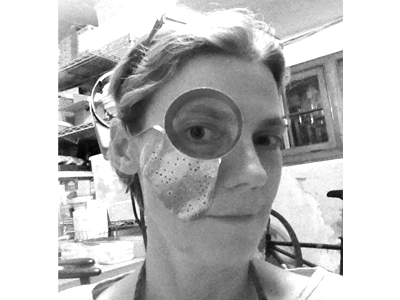
Karin Johansson’s jewelry is subtle and elegant. Harmony of colors, tactile textures, lightness, and dynamic shapes define her new Soundtrack collection, on view now at Jewelers’Werk Galerie in Washington, D.C. The work is a playful continuation of her Abstractions of a City series, with a twist in which she adds aluminum to the materials she normally uses, perhaps an allusion to the time of its discovery in the 19th century. At that time, it became the material of choice for fashionable jewelry, though it is now employed for mundane and industrial products, fragments of which end up on city streets, floating around us.
Adriana G. Radulescu: Where were you born, and where is your studio?
Karin Johansson: I grew up with my parents, three sisters, and a brother on a farm in the countryside outside the city of Värnamo, in the south of Sweden. My studio and my home are now in Gothenburg, Sweden.
Can you tell us about your background? When did you realize you wanted to make jewelry? Where did you learn to make it?
Karin Johansson: I attended HDK—Academy of Design and Crafts at Gothenburg University in 1989. At that time the department was called Metal Art, which meant we studied and worked on not just jewelry, but also objects. I had two good and also very different teachers, Tore Svensson and Christer G. Jonsson. The focus was on form, materials, and techniques, and less on concept and discussions of the work; and the main material was metal. I am grateful for the solid base I gained at the school; it allowed me to work freely. During my years at HDK, the education more and more converged toward the field of jewelry, and at the end of the 90s the Academy of Design and Crafts became the first Swedish university with an academic program in jewelry art. Just as my education became more focused on jewelry, so did my work. In my last year, however, I designed a candlestick, cast in iron, which was selected by David design (Dd) for their collection. I received royalties for it, and it is probably my design piece with the most international exposure. Since my graduation in 1994 my art has evolved into jewelry, but I can envision that in time I will be open and curious to using my experience and skills for new and different ways of working.
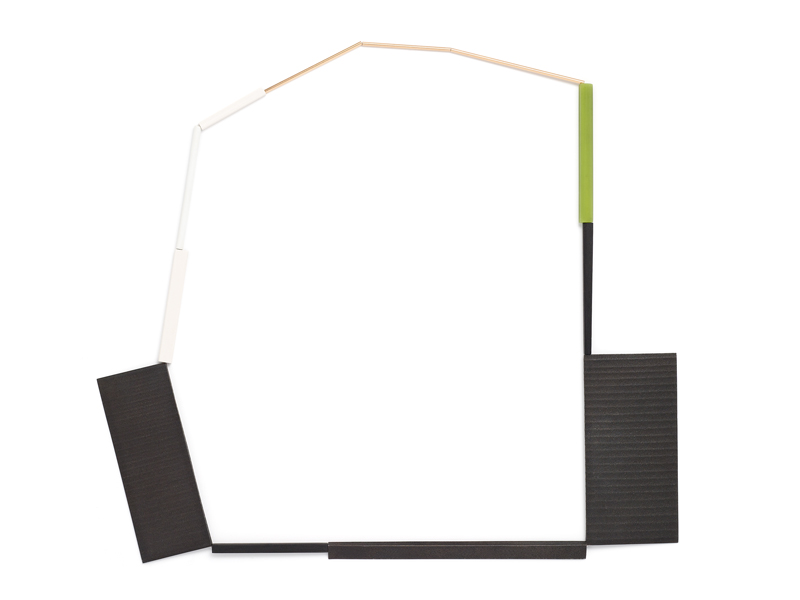
Your recent jewelry series are very urban and, even without titles, evocative of city architecture. How did you start associating architectural, city elements with your jewelry work?
Karin Johansson: The necklaces from the series Abstractions of a City all have titles hinting at their place of origin, such as End of the Street, Sunny Spot, or Meeting Point. Being an inhabitant of the city, I take in what surrounds me, what affects and influences me, sometimes more on an unconscious level. My camera (iPhone) is a notebook, a collector of moments, a keeper of memories, and sometimes an important tool in my work. In Abstractions of a City I worked off photographs and images, and sometimes memories. I drew lines on the image and picked colors from it—the image was my guide. I worked on the table composing the pieces, assembling the necklaces flat in the way I wanted them to be presented—like a print of a town square. When worn, they will appear differently. As in the previous work, Collection Butterflies, I collaborated with the design company Happy, which made the catalog Abstractions of a City, featuring a selection of 20 necklaces from the series. I believe that the design of the catalog together with the images of the pieces highlights the concept of the necklace as an abstraction of a city. I enjoy collaborating with people from other fields or from different backgrounds, and seeing how someone else interprets my work, my ideas.
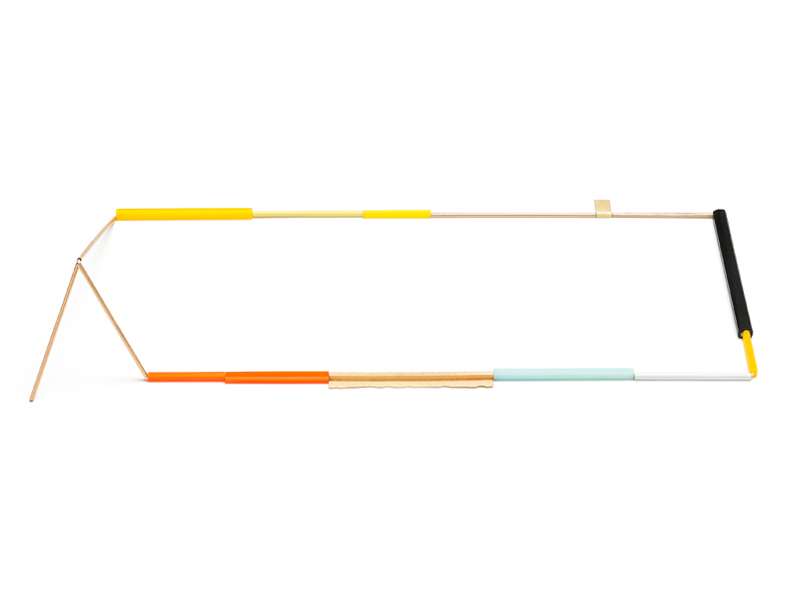
There are contemporary composers fascinated with the sounds of the city and the perpetual buzz associated with urban living. Your exhibition is titled Soundtrack. What is the meaning of the title? Is there an allusion to the perceived musicality and playfulness of your latest pieces?
Karin Johansson: If one finds musicality and playfulness in my latest work, I’m happy! As in the previous work, the city has given me the inspiration, the starting point to my work. I was reflecting on how people move inside the city, and how the city surrounds us. Everywhere there are fragments, pieces left behind on the ground, strings, candy packages, and ribbons. They are like frozen moments, but constantly in change and movement. In Soundtrack, I wanted to work more three-dimensionally, twisting and bending materials, giving direction, curves, trying to catch the essence of movement.
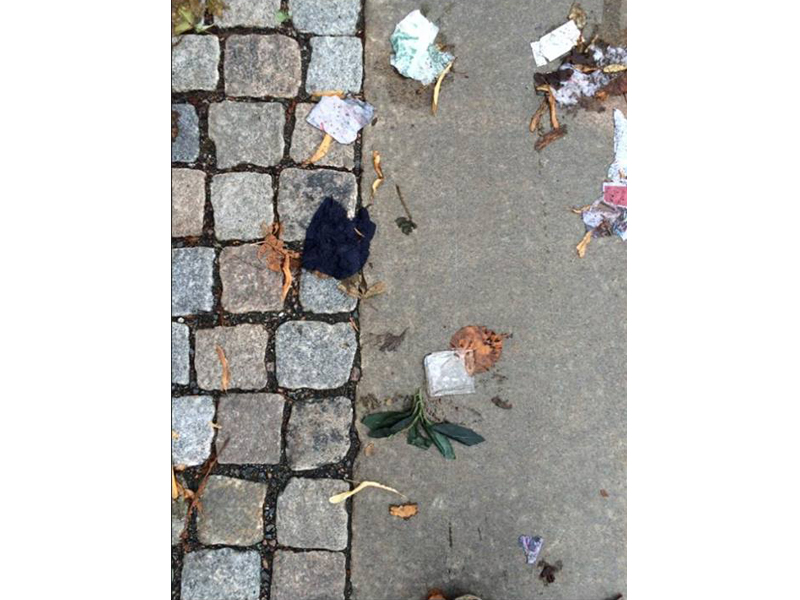
How would you categorize your jewelry? Is it a narrative of your experiences, is it conceptual?
Karin Johansson: My jewelry is a narrative of my experiences; it reflects who I am and what comes across in my life.
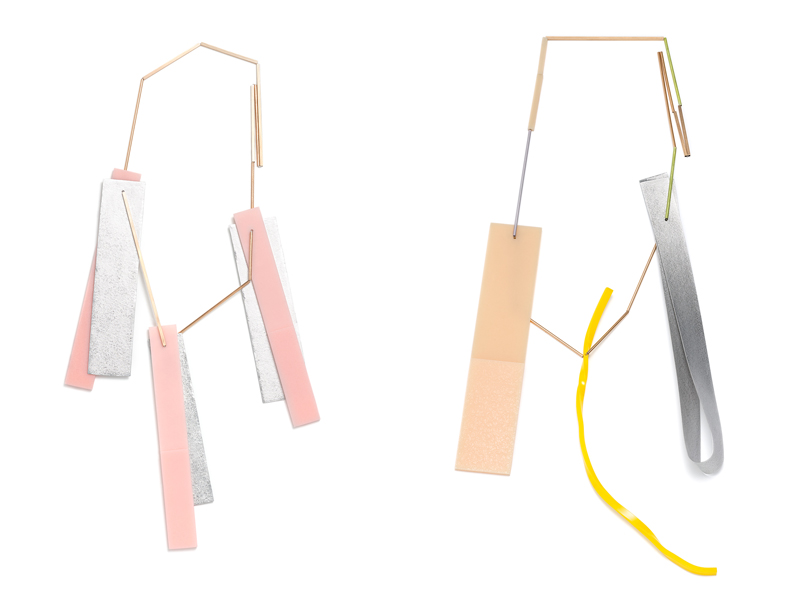
Many pieces on the Soundtrack collection have names rather than titles. Who are the people modeling the pieces, and what is their role in the story of each piece?
Karin Johansson: The people in the pictures are friends, colleagues, students, my son and daughter, and their friends. I wanted to have just “ordinary people,” the type you’d randomly meet in the street. They gave their name to the piece they’re wearing.
In fact, you have given more room, in this last series, to photographs of models—both in your exhibition at Klimt02 and in your last publication. Why this decision?
Karin Johansson: It was more or less the first time I used models in photographs, and I’m happy with the result. In the Soundtrack series, the sense of rhythm and movement was important, and I felt the best way to communicate this was by showing the pieces worn. When making the Soundtrack pieces I worked straight on the body to get the right movement and space. The body was my workspace and it was just natural to use models for the photo shoot.
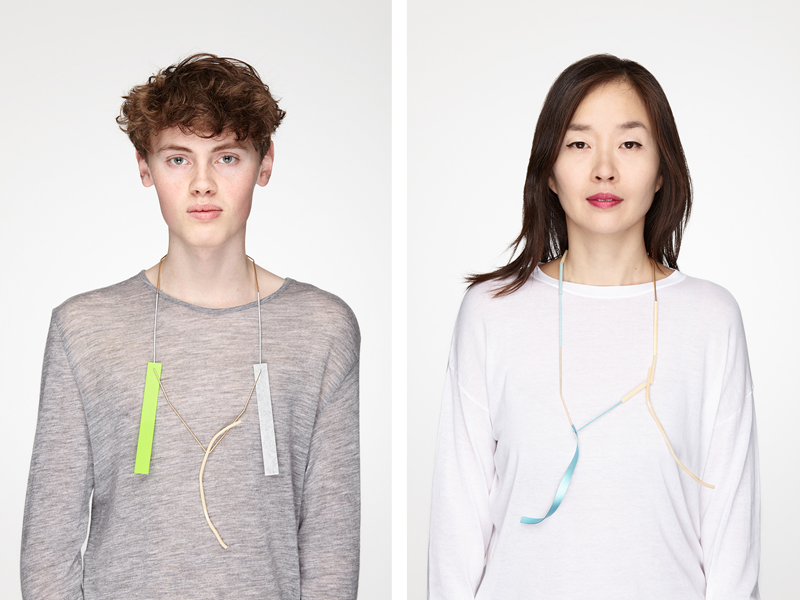
Where do you see your work in the open cultural field defined by art, design, craft, and fashion?
Karin Johansson: I don’t want to give my work these limitations. I’m open, and if my work can act in different contexts, I’m happy.
In your studio, which we visited with AJF in 2014, there were many colorful bits and pieces and found treasures. What is your design process, and what role do color, found objects, and materials play in it?
Karin Johansson: The found objects/treasures in my studio are my companions and sometimes my inspiration, but I hardly use them in the final pieces. I love to spend time in my studio, it’s the place where things happen and become. I surround myself with things, notes, books, plants, music, radio … these different parts go in and out of my work, they support and they surprise me—they are just there. Often I find that I’m copying myself, consciously or unconsciously. I sometimes think I do the same things over and over again, but differently.
For Soundtrack I chose aluminum as I wanted to work with curved and moving shapes that have color and a light density (since I was looking for a kind of weightless expression—floating, moving). The aluminum is also, in our time, a low-cost material used in many daily things such as packages and candy wrapping, so that was also a reference to the ordinary things around us that can be found in the streets.
Besides being a working artist, you have been teaching and are part of Hnoss Initiative, organizing exhibitions and workshops. How do you balance your own creative work with these other activities?
Karin Johansson: It’s often a matter of good planning, and for me these different parts of being an artist, professor, and member of the Hnoss community—they all connect, need, and sustain each other. Sometimes it can be a bit tricky to find time and focus on all of them, but with years and experience I can deal with it better. Sometimes there are intense weeks of teaching, then comes more dedicated time in the studio. Being the mother of two teenagers who I love spending time with, I just have to make things and life work.

There is a vibrant and apparently close jewelry artists’ community in Sweden. Tore Svensson, for example, created a series of modern cameos of his peers, including yours. How would you describe the dynamics of the Swedish jewelry creators group, and how do you see its influence on the creativity and diversity of individual artists?
Karin Johansson: Gothenburg is the base I work from, so I’ll try to explain it from there. For a good number of years there has been a very dynamic spirit in the jewelry community in the city. Several international symposiums, workshops, exhibitions, and other activities were initiated and realized through a fruitful collaboration between operators—institutions such as HDK—Academy of Design and Crafts, Hnoss Initiative/gallery, and Röhsska Museum for Arts, Crafts and Design. Already as a student you are invited into this atmosphere, and it comes naturally to create and build things together, share skills and information, and discuss your work. I feel it is a very generous, open, and inspiring climate in the field, which results in a huge variety of expressions and concepts in the actual jewelry pieces, and stimulates one’s creative identity to go further as an artist.
What are you currently reading, hearing, or seeing of particular interest?
Karin Johansson: Right now I am reading together with my daughter A Room of One’s Own, by Virginia Woolf, and on my own The Boat, by Nam Le. Next to my bed there are piles of books such as Particulars, by David Goldblatt; In and Out in Fashion, by Viviane Sassen; Drawings, by Rachel Whiteread; Roni Horn, by Roni Horn; Freedom, by Jonathan Franzen; The Little Horses of Tarquinia, by Marguerite Duras; Winter Journal, by Paul Auster, and more.
I like to watch documentaries. The latest was Pina, by Wim Wenders, and I love going to the cinema—to be invited to, and surprised by, an absurd movie such as Relatos Salvajes (Wild Tales) by Damián Szifrón.
Music is important for me. It can touch the very inner part of my heart, it can give strength and happiness, it can recall memories, it can make you smile, and it can make you cry. It is very direct.
Thank you!
The works in this exhibition are priced between US$1,650 and $4,550.
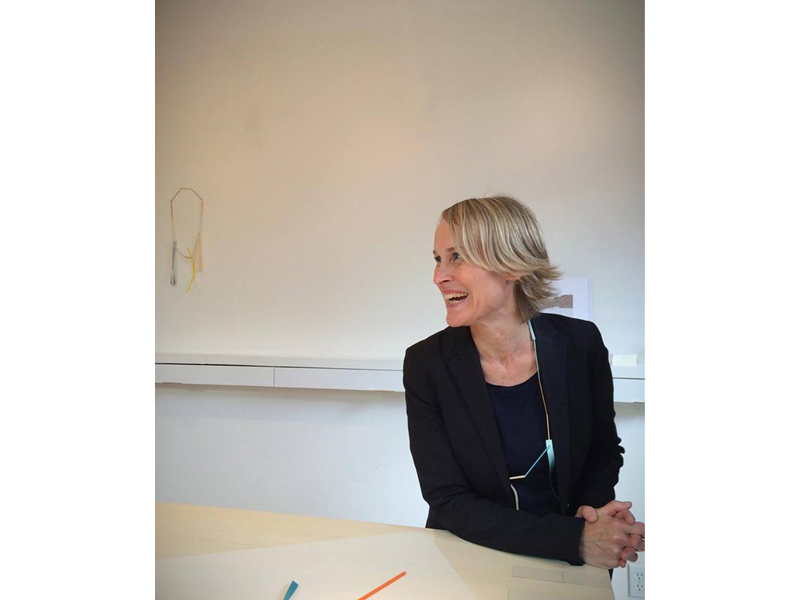
INDEX IMAGE: Karin Johansson, David, 2015, necklace, gold, acrylic, 840 mm, photographer: elStudio
